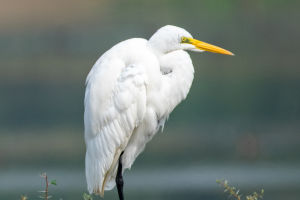Mysterious Bird
The magpie series of birds are very popular, and their appearance is very mysterious, like wearing a black coat. It also plays an active role in eradicating pests and removing waste from the field. Moreover, magpies have a wide distribution range and many species.
The black-billed magpie is one of them. The black-billed magpie belongs to the Corvidae family. Living in large areas of the western United States, it has a longer tail than its wings and is one of four North American songbirds with a tail that is more than half its body length.
The black-billed magpie is 45 cm long, black and white, with a hint of blue-green on its tail. The head, neck, back and tail are all black, and appear purple, green-blue, green and other luster respectively from front to back. The wings are black with a large white spot on the shoulders. The mouth, legs and feet are pure black. The ventral surface is bounded by the chest. The front is black and the back is white.
The species inhabits vast rural areas, is evenly distributed in urban, rural and natural landscapes, and is frequently found in parks, gardens, farmland, heathland, wetlands, dunes, woodlands and forest edges, usually gather in small groups of 6-10 individuals group.
Black-billed magpies live up to 3,000 meters above sea level. They generally live in pastures and wooded fields, usually near water edges and river banks. For ease of nesting and concealment prefers to choose wooded areas where trees and shrubs are robust enough to support their relatively large nests.
During the non-breeding season, larger bird groups form common habitats that can house up to several hundred birds. It is an omnivorous animal, often foraging on the ground, mainly on insects and larvae, as well as songbird eggs and chicks, but also fruit and cereal crops and small mammals.
Access to grasslands and clearings when foraging, farms and agricultural areas have these advantages, making rural human settlements ideal habitats for this species. Trash in agricultural areas also provides foraging opportunities, such as open compost heaps.
The black-billed magpie looks almost exactly the same as the oriental magpie, and it is basically indistinguishable when it stops perching, but the tail of the black-billed magpie seems to be slightly longer. It is worth mentioning that the call of the black-billed magpie is more similar to the gray magpie, and not as hoarse as the magpie.
At the same time, the living habits of black-billed magpies are also slightly different from other magpies.
1. The territory is flexible
The nest density of black-billed magpies varies greatly from scattered nests to communal nesting areas, and these changes are related to the abundance of food and resources. They nest close to each other when food is plentiful and separate when food is scarce. This suggests that their territorial behavior is flexible.
Black-billed magpies may defend 0.3 hectares of territory during the breeding season. While on the territory, they passively defend their territory by sitting quietly in the treetops to advertise their presence.
2. Gather in small groups
Usually gathers in small groups of 6-10. During the non-breeding season, larger bird groups form common habitats that can house up to several hundred birds. But in cold weather, instead of huddling together, they inhabit conifers, where the branches act as protection from predators and wind.
3. Unique activity posture
The black-billed magpie walks with a staggering gait, with a swaggering gait, and often jumps before flying. Level flight usually consists of slow, steady flaps of the wings, while descending flight consists of a series of wing beats interspersed with pauses, with the wings tightly clamped to the body. This alternating pattern creates a unique "J-shaped" flight trajectory.


